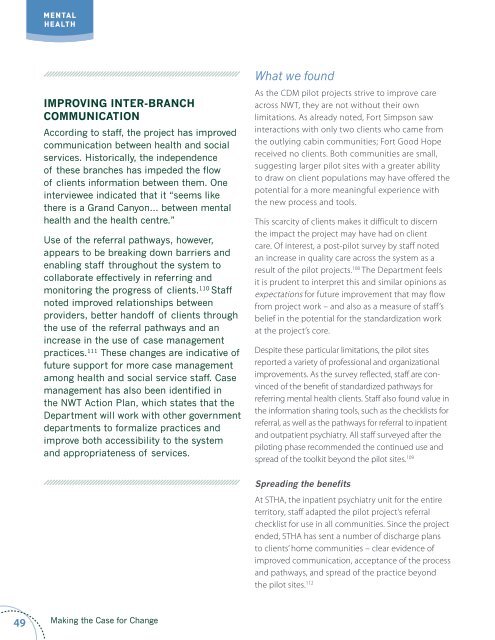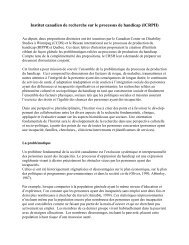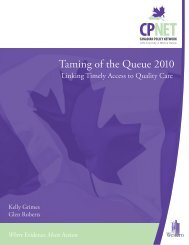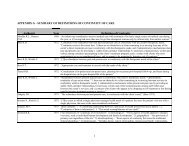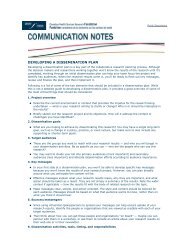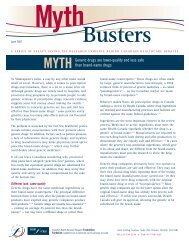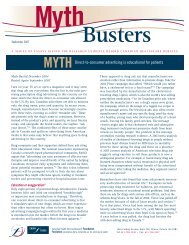Full Report
Full Report
Full Report
Create successful ePaper yourself
Turn your PDF publications into a flip-book with our unique Google optimized e-Paper software.
MENTAL<br />
HEALTH<br />
Improving inter-branch<br />
communication<br />
According to staff, the project has improved<br />
communication between health and social<br />
services. Historically, the independence<br />
of these branches has impeded the flow<br />
of clients information between them. One<br />
interviewee indicated that it “seems like<br />
there is a Grand Canyon… between mental<br />
health and the health centre.”<br />
Use of the referral pathways, however,<br />
appears to be breaking down barriers and<br />
enabling staff throughout the system to<br />
collaborate effectively in referring and<br />
monitoring the progress of clients. 110 Staff<br />
noted improved relationships between<br />
providers, better handoff of clients through<br />
the use of the referral pathways and an<br />
increase in the use of case management<br />
practices. 111 These changes are indicative of<br />
future support for more case management<br />
among health and social service staff. Case<br />
management has also been identified in<br />
the NWT Action Plan, which states that the<br />
Department will work with other government<br />
departments to formalize practices and<br />
improve both accessibility to the system<br />
and appropriateness of services.<br />
What we found<br />
As the CDM pilot projects strive to improve care<br />
across NWT, they are not without their own<br />
limitations. As already noted, Fort Simpson saw<br />
interactions with only two clients who came from<br />
the outlying cabin communities; Fort Good Hope<br />
received no clients. Both communities are small,<br />
suggesting larger pilot sites with a greater ability<br />
to draw on client populations may have offered the<br />
potential for a more meaningful experience with<br />
the new process and tools.<br />
This scarcity of clients makes it difficult to discern<br />
the impact the project may have had on client<br />
care. Of interest, a post-pilot survey by staff noted<br />
an increase in quality care across the system as a<br />
result of the pilot projects. 108 The Department feels<br />
it is prudent to interpret this and similar opinions as<br />
expectations for future improvement that may flow<br />
from project work – and also as a measure of staff’s<br />
belief in the potential for the standardization work<br />
at the project’s core.<br />
Despite these particular limitations, the pilot sites<br />
reported a variety of professional and organizational<br />
improvements. As the survey reflected, staff are convinced<br />
of the benefit of standardized pathways for<br />
referring mental health clients. Staff also found value in<br />
the information sharing tools, such as the checklists for<br />
referral, as well as the pathways for referral to inpatient<br />
and outpatient psychiatry. All staff surveyed after the<br />
piloting phase recommended the continued use and<br />
spread of the toolkit beyond the pilot sites. 109<br />
Spreading the benefits<br />
At STHA, the inpatient psychiatry unit for the entire<br />
territory, staff adapted the pilot project’s referral<br />
checklist for use in all communities. Since the project<br />
ended, STHA has sent a number of discharge plans<br />
to clients’ home communities – clear evidence of<br />
improved communication, acceptance of the process<br />
and pathways, and spread of the practice beyond<br />
the pilot sites. 112<br />
49<br />
Making the Case for Change


